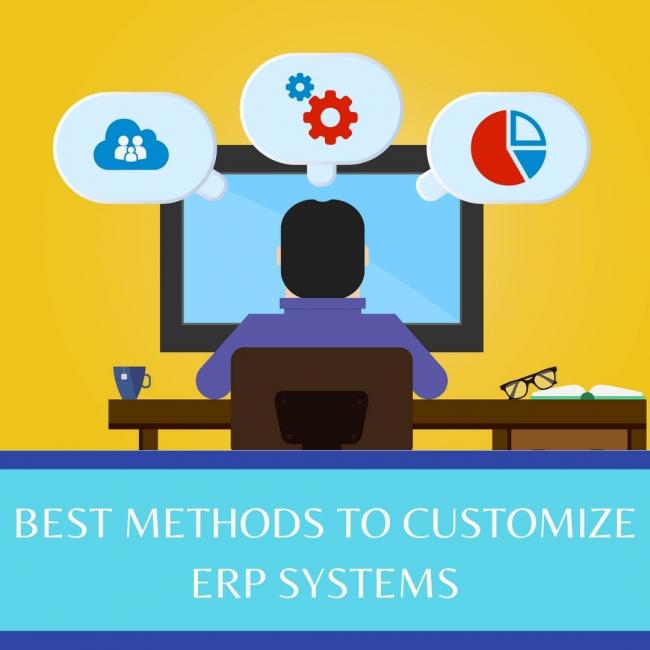3 Tips To Manage ERP Customization

In the digital age, companies are increasing their online presence and are becoming more reliant on custom software to function smoothly. One such important feature of customization is Enterprise Resource Planning or ERP.
What is ERP?
In a nutshell, ERP can be defined as basic management strategies that are logically integrated into a software application, thereby automating various aspects of a corporation such as resource management, capital distribution, and even human resources.
ERP And Customization
Just like any software, an ERP system also benefits from some form of customization as it becomes fine-tuned to the unique processes of a company. However, this customization can’t be haphazard, for it will derail the ERP’s functionality in the long run. Hence, most firms opt for limited customization in this domain. If you are also looking to add a tailormade ERP system for your company, then it’s important to learn and manage specializations, which require meticulous planning.
3 steps to manage ERP customization
1. Learn The Difference Between Customization And Configuration
ERP customization and configuration are often used interchangeably in many cases. However, there is a subtle but very important difference between them, and this knowledge can help you manage the customization process.
Essentially, ERP configurations are often surface-level changes that can be made to a generic ERP software. It can be as simple as selecting new settings from a preset menu. Some good examples of configuration are changing access control, units of measurement (Imperial or Metric) and custom fields. Ultimately, these changes don’t affect the basic structure of an ERP system.
Conversely, ERP customization requires a deep dive into the coding and basic architecture of the system and modifying this can be quite tricky if one isn’t sure about the process. It also requires a lot of expertise in the programming side of things, but if it is executed perfectly, then the benefits are endless. Here are some classic examples of ERP customization:
- Tweaking User Interface: Making aesthetic changes to improve interaction with the user.
- Changing Documents: Changing the layout as well as font for invoices and order confirmations.
- Functionality Modifications: Tweaking the source code of the software to add some new features or to improve the efficiency of the system.
2. Consider Abstraction Layers
One of the biggest risks with ERP customization is improper planning and execution, thereby drastically modifying the system and making it incompatible with future updates, on both the company and vendor sides. That being said, some level of customization is essential for optimal operation. Thus, in order to bypass the risks that come with specialization, it’s vital to incorporate abstraction layers in your system.
For the uninitiated, abstraction layers are a form of added protection or parameter that separates the customization updates from the source code. Hence, if any unwanted changes are made, then they can be tested with the help of abstraction layers without damaging the entire system.
Although almost all ERP’s that are currently in the market do have abstraction layers, you should check your system and see if you can add more layers or if the current level of abstraction is enough for your operation.
3. Analyze The Utility Of Customization
Although customization is vital from a business standpoint, not all updates are created equal. To ensure the long-term success and smooth functioning of customization, it’s necessary to ask some important questions and analyze updates. It’s important to consider whether a given modification solves any existing issues, adds core, long-term value and whether it can be added to the software without changing the basic code.
Apart from researching the aforementioned criteria before customization, it’s also equally important to declutter your existing programs, for some updates might have lost their utility over time. If you don’t remove or modify unrequired code, then it can accumulate and reduce the speed of your system.
Here are 3 ways to declutter your ERP software:
- Removal: If customization doesn’t impact the main system in a significant way, then it’s safe to remove it entirely.
- Disabling: In cases where particular customization spans across various system components, it’s wiser to disable or hide it to not adversely impact the entire system.
- Rebuilding: In cases where removal and disabling are not possible, the only option might be to rebuild the customization in a new ERP system. Since this can be extremely tedious, we recommend choosing this way when you’ve exhausted other options.
In Conclusion
In the end, ERP customization might seem like a daunting task at the outset. However, with the help of these 3 management tips, you can likely use it to positively impact your ERP software and improve your company’s productivity in the long run.
For all your custom software development requirements, look no further than Vestra Inet, an innovative software development firm based in Toronto. Our software solutions are geared towards your particular business model and will provide the much-needed boost in productivity and efficiency for your organization. For more details, contact us today.
